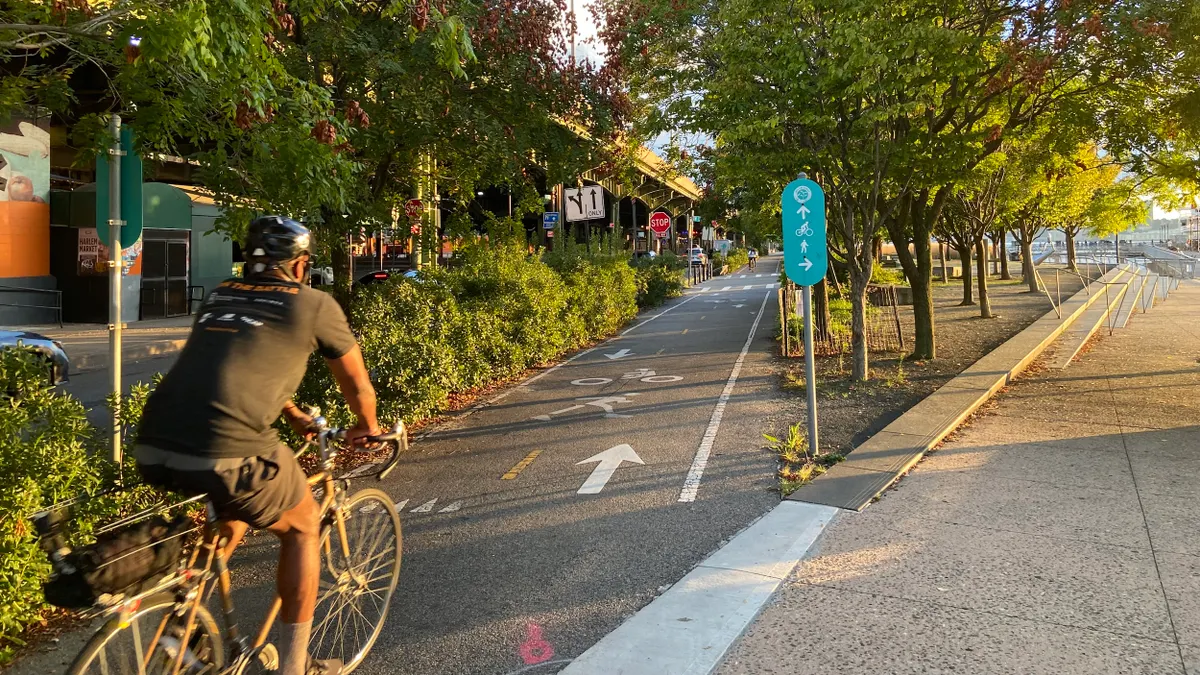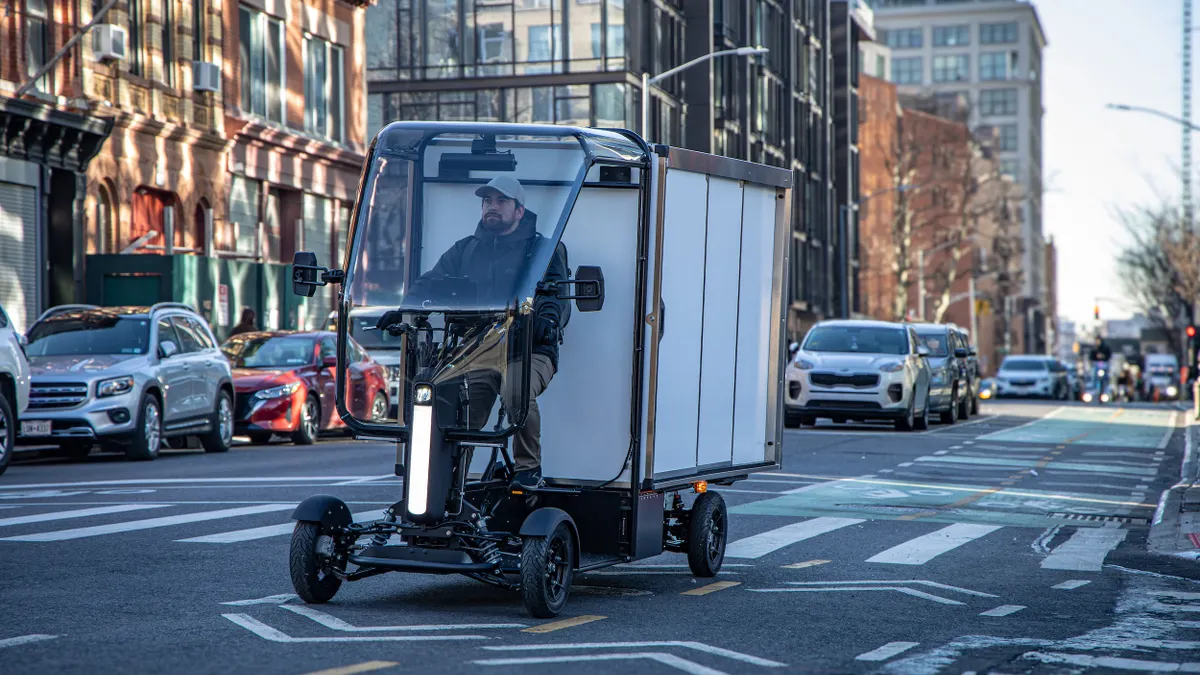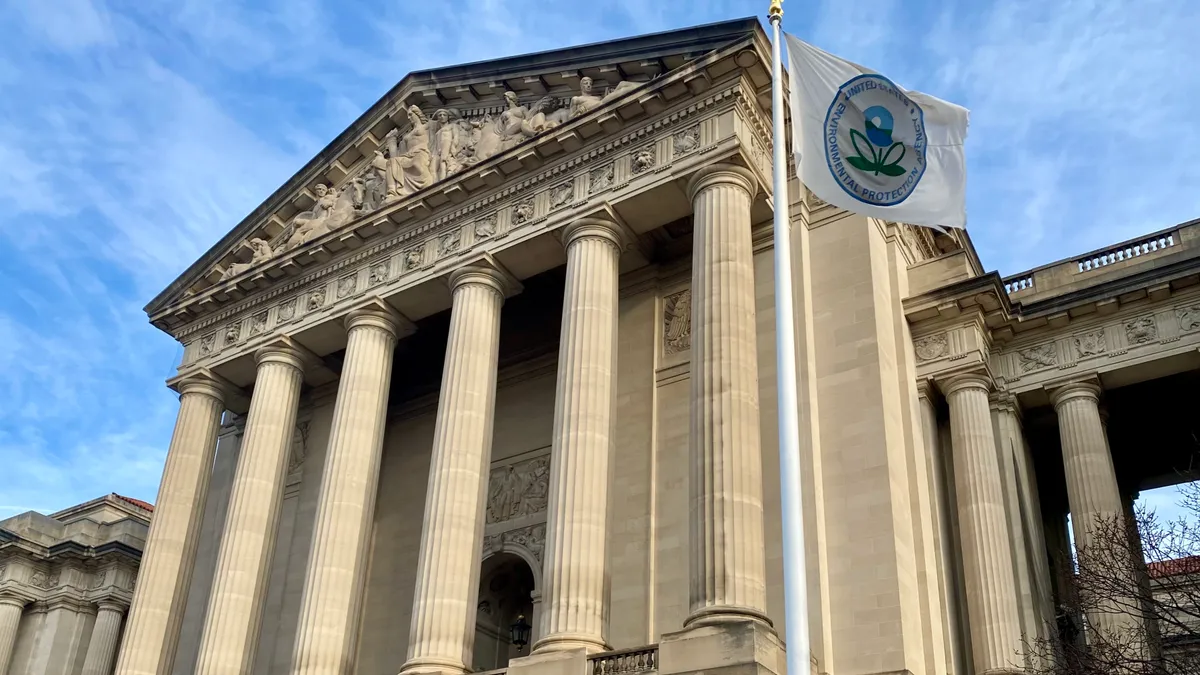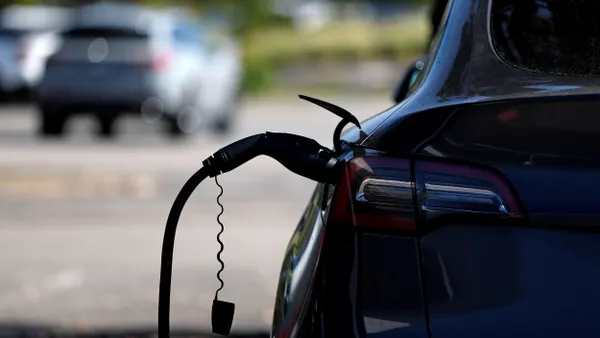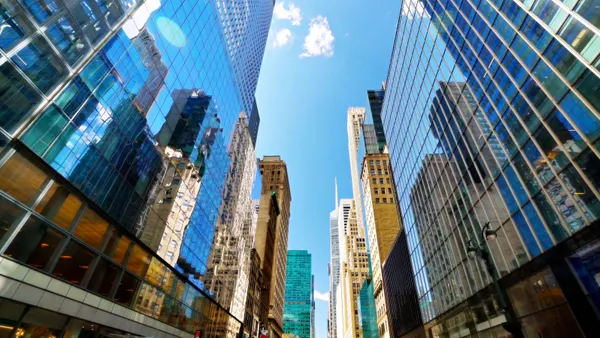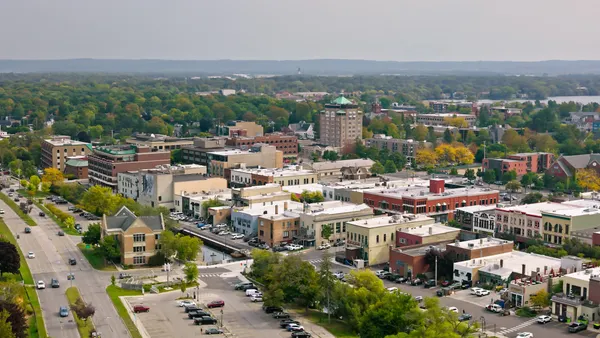Dive Brief:
- New York City released a comprehensive plan August 13 to expand its 506-mile network of greenways for pedestrians, bicyclists and recreational users.
- The plan maps out more than 100 proposed or underway greenway capital projects. Required under Local Law 115 of 2022, the plan is the first of its kind in more than 30 years for the city.
- “New Yorkers love their parks and waterfront — and greenways are the way they increasingly reach and enjoy these wonderful spaces,” the city’s Department of Transportation Commissioner Ydanis Rodriguez said in a statement.
Dive Insight:
New York City’s and North America’s oldest greenway, in the borough of Brooklyn, dates back to 1894. But the city’s current network, developed over the years by a variety of agencies and partners, often created disconnected segments.
“Transforming our city’s patchwork of greenways into a unified, citywide network will make New York more equitable, sustainable, and connected — especially for historically underserved communities that need and deserve better access to open space and clean transportation,” Aila Soomro, deputy director for NYC policy for the New York League of Conservation Voters, said in a statement.
The city’s transportation department developed the 90-page plan in collaboration with the Department of Parks and Recreation and the New York City Economic Development Corporation. Greenways, as the city defines them, can be on-street or off-street paths. These corridors can include playgrounds, bike racks and pedestrian islands.
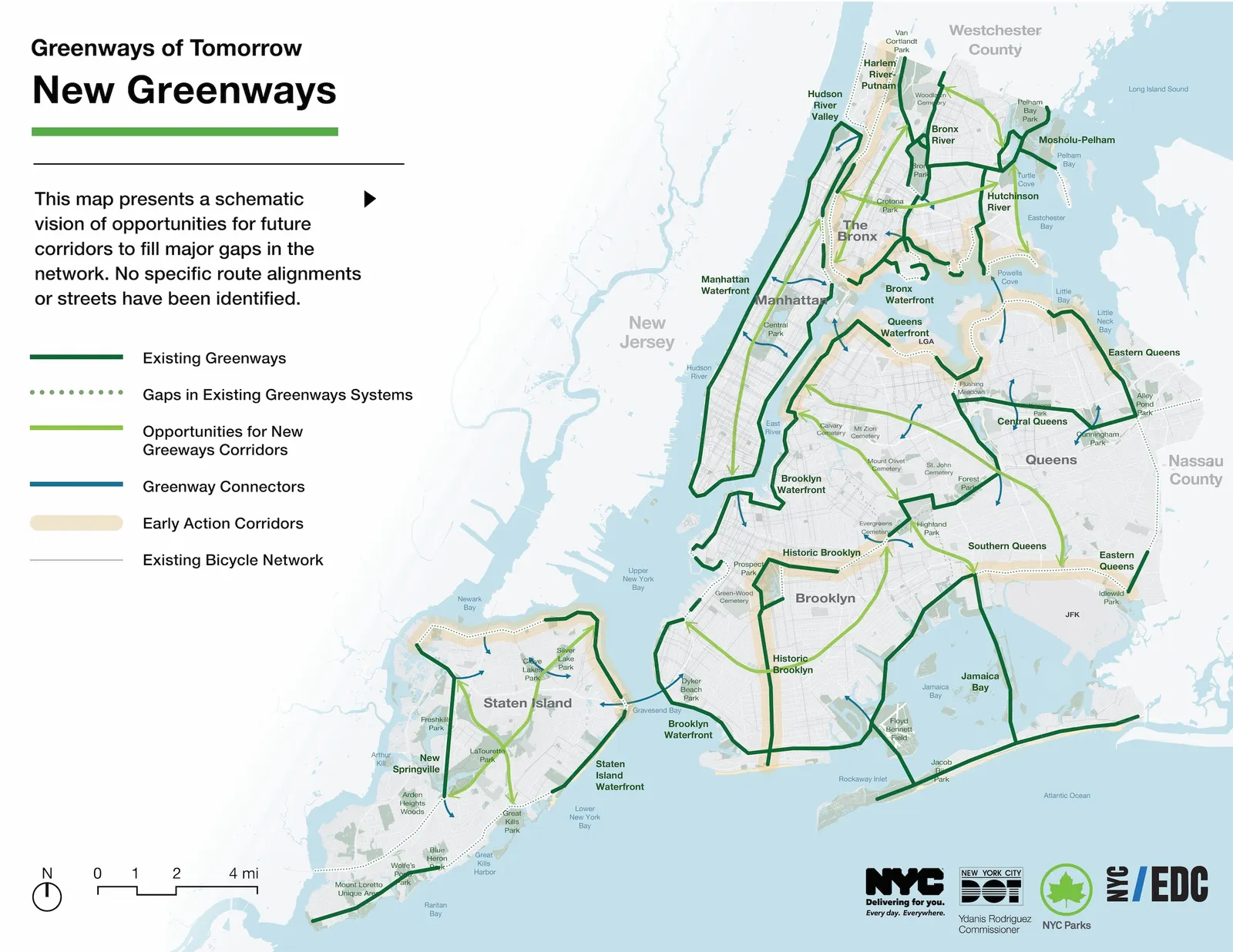
The plan expands upon Mayor Eric Adams’ 2023 effort to establish five corridors in the boroughs of Queens, Staten Island, Brooklyn and the Bronx. The city received a $7.25 million federal grant for greenways planning in 2022. The transportation department released a map showing existing greenways, gaps in the system and opportunities for new corridors. The city will continue to engage with local communities as it refines these proposed projects, the plan states.
Greenways encourage active transportation such as walking and biking, connect underserved communities with jobs and neighborhood amenities, spur economic development and help mitigate the effects of extreme weather with shade trees and ground cover for stormwater retention, according to the plan.
“For the families I represent, New York City greenways create safer, healthier ways to live and connect,” City Councilmember and Majority Leader Amanda Farías said in a statement. “I've spoken with parents who want their children to have safe routes from school, seniors who want walkable spaces near home, and working-class residents who need dependable routes to bike to work and maintain a healthy lifestyle.”



